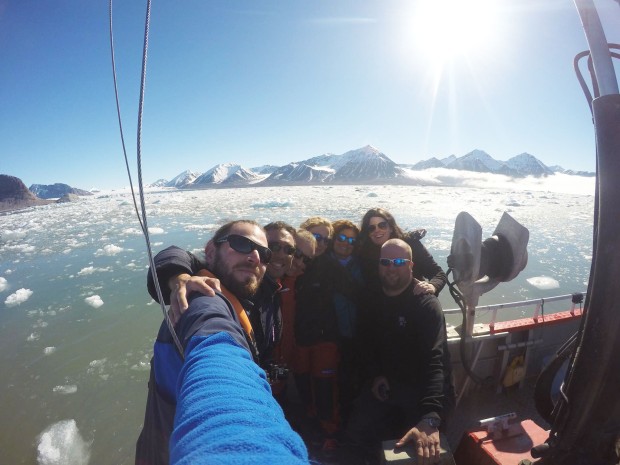When I first began work on soil samples from the Italian Alps I didn’t realise the significance of the question that I was endeavouring to answer. Whilst determining the exact route taken by Hannibal of Carthage across the Alps to invade Italy in 218 BC won’t exactly change the way we live our lives, it is certainly of great interest to archaeologists, historians, and anyone with an interest in history. In fact, I believe people are always captivated by others who take great risks and embark on seemingly impossible journeys. Just how they manage to succeed in these extreme feats grasps the attention of everyone with an inquisitive mind.
Prof. Bill Mahaney of York University, Toronto certainly knew of the importance of this work as he had been fascinated by Hannibal’s great endeavour for many years. After thorough examination of the relevant literature from both ancient and modern historians, he was impressed by Sir Gavin De Beer’s inclusion of environmental factors in his suggestion of a particular passage through the Col De La Traversette. Prof. Mahaney had to see this for himself and so travelled the route and applied his expertise in geological techniques to investigate whether this really could be Hannibal’s chosen path. The results of this historical and geological analysis are presented in part 1 of our recent publication in Archaeometry.
Knowing that this evidence was not sufficient, Prof. Mahaney contacted his colleagues around the world to provide further analytical approaches using their own expertise. The project had now become a major multidisciplinary investigation involving researchers from Canada, Ireland, the USA, Estonia, Portugal, the UK, and France. My supervisor in Dublin City University, Dr. Brian Kelleher, was contacted to enquire about conducting chemical analysis of soils along the route. When an army of 30,000 troops, 15,000 horses, and 37 elephants travels through an area they are sure to leave some mark. In this case it was faecal biomarkers, chemical compounds in excrement that remain in the environment for 1000s of years.
Along the route there is a large body of water in the Guil Valley, an obvious place to rest for any traveller and perfect for a large army. Whilst sampling soil from an adjacent mire it was discovered that a layer of the soil was noticeably ‘churned-up’. The soil was disturbed in such a way as to suggest that there must have been significant activity at this point in history. Radiocarbon dating of this layer placed it spectacularly close to the date of Hannibal’s epic journey. Soil samples from this spot and other parts of the valley were analysed by myself and colleagues here in the OGRe lab in DCU, Dr. Shane O’Reilly and Dr. Brian Murphy. We detected significant levels of faecal sterols and bile acids, compounds produced during digestion, in this churned-up layer but not in any other location.
These chemical biomarkers are rarely present naturally in the environment and high concentrations such as those observed here are almost certainly due to faecal deposition. Microbiologists at Queen’s University, Belfast isolated gut bacteria from this soil as well, supporting the evidence of faecal deposition. These results are published in part 2 of our paper in the journal Archaeometry.
So far, along a route which matches well with historical accounts, we have identified a layer of disturbed soil with significantly increased levels of animal and/or human faeces which dates to the same time period of Hannibal’s crossing of the Alps. The media response to these findings has been brilliant, beginning with excellent articles written in The Guardian and The Irish Times. Since then the story has been covered by the BBC, CNN, The Huffington Post, Science Magazine and many others. In the past few days over 100 articles have emerged from publications across the globe, an overwhelming response. Whilst some media reports have claimed the age-old question has been answered, this is certainly not case closed. It is, however, very compelling evidence which requires further investigation to solve this mystery once and for all.
Hopefully some archaeological work in the near future will uncover items left by Hannibal’s army. Maybe there will be skeletal remains of soldiers, horses, or even elephants buried along the route. Until then, I am happy to have helped pave the way for this future research which may prove once and for all that this was the path chosen by Hannibal to conduct one of the most daring military journeys in history.


